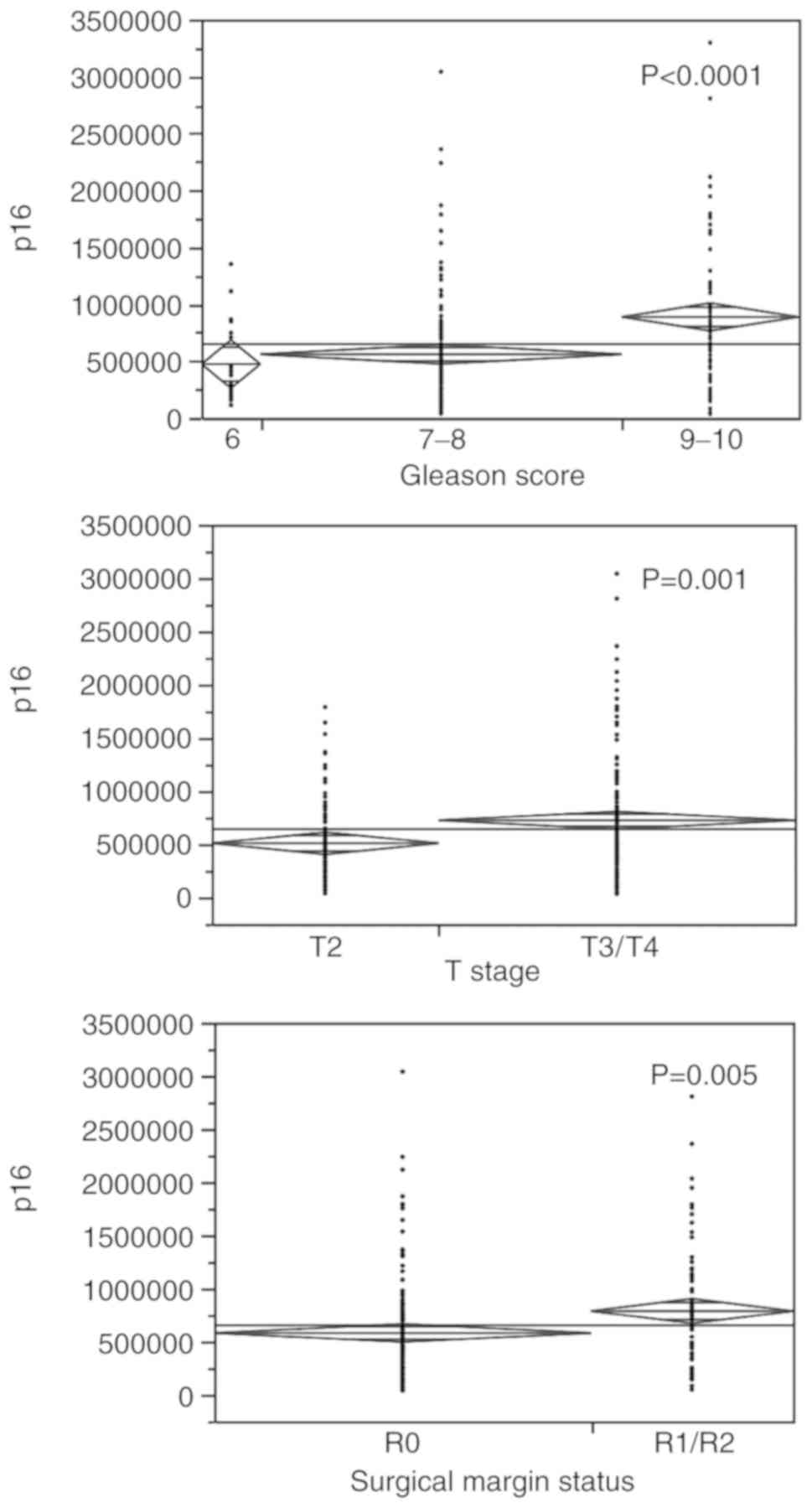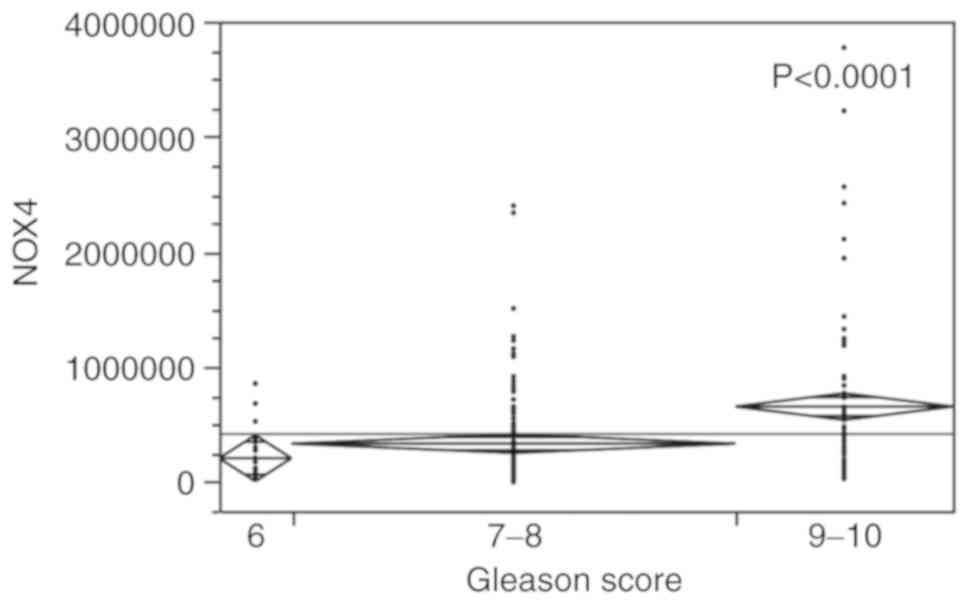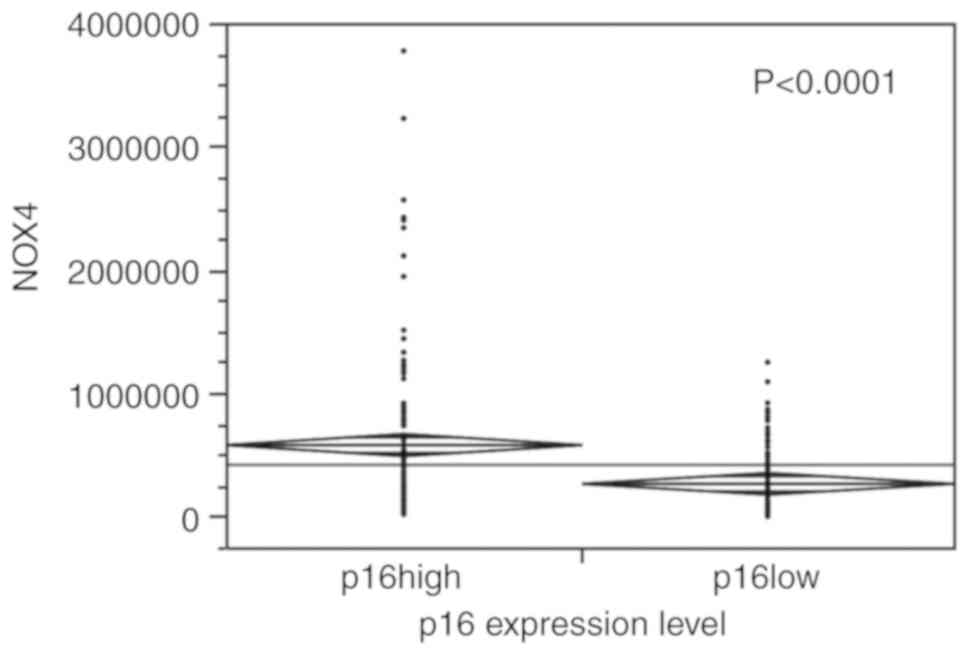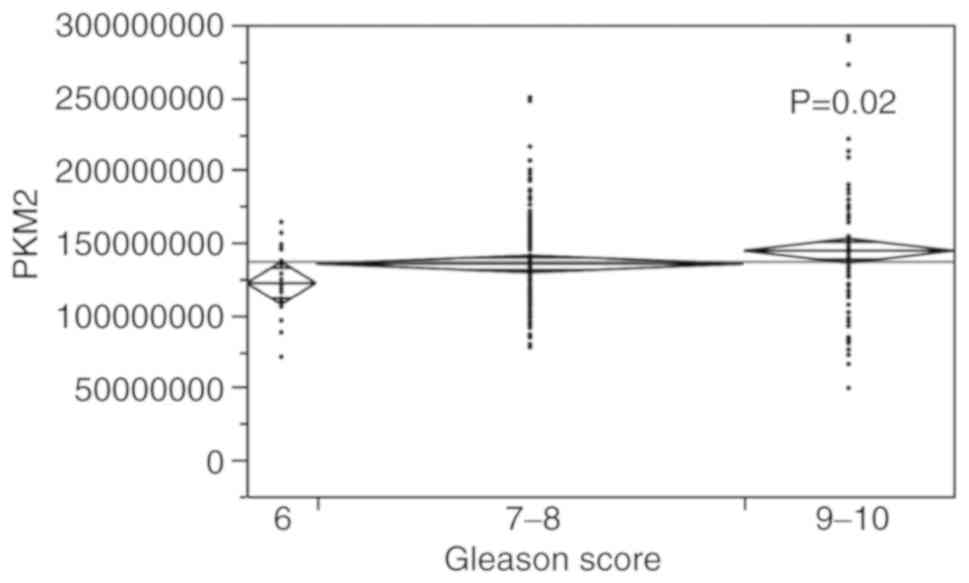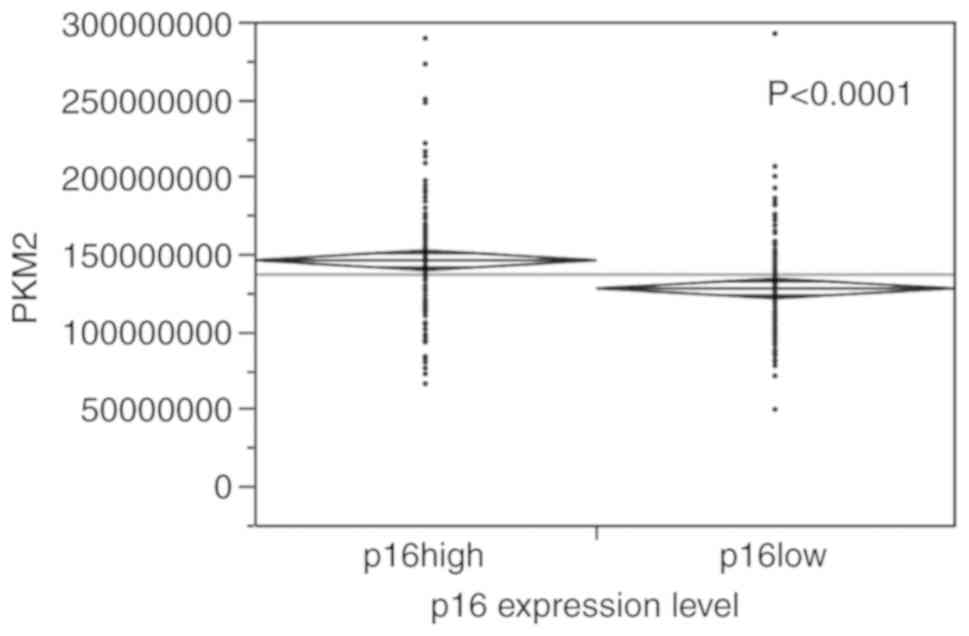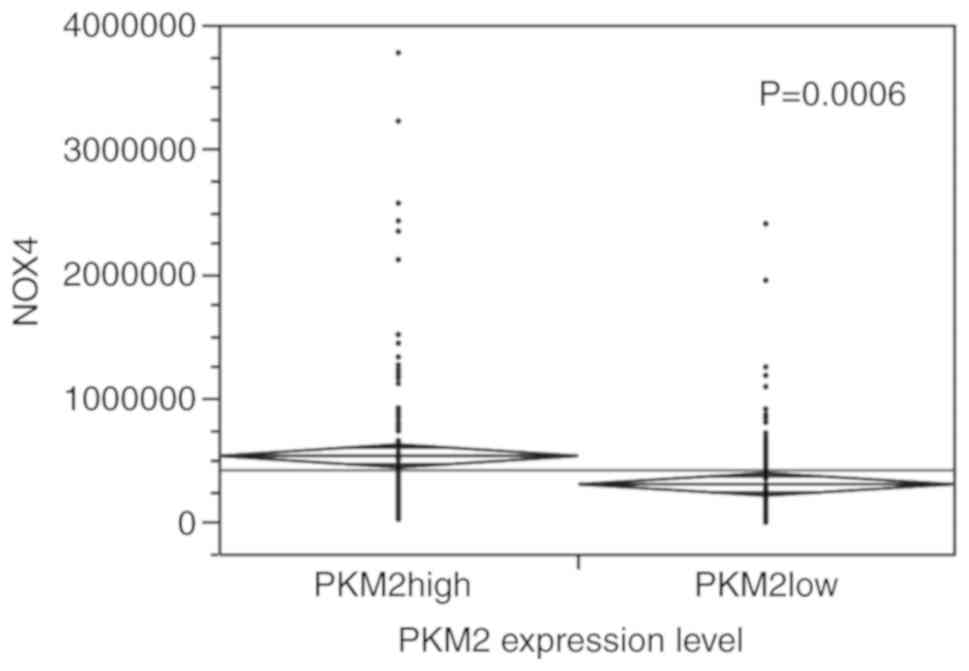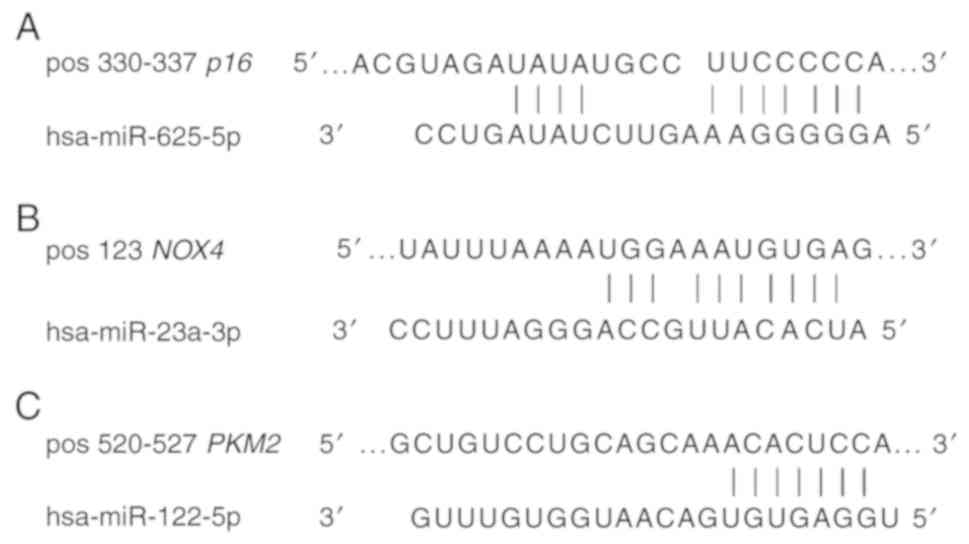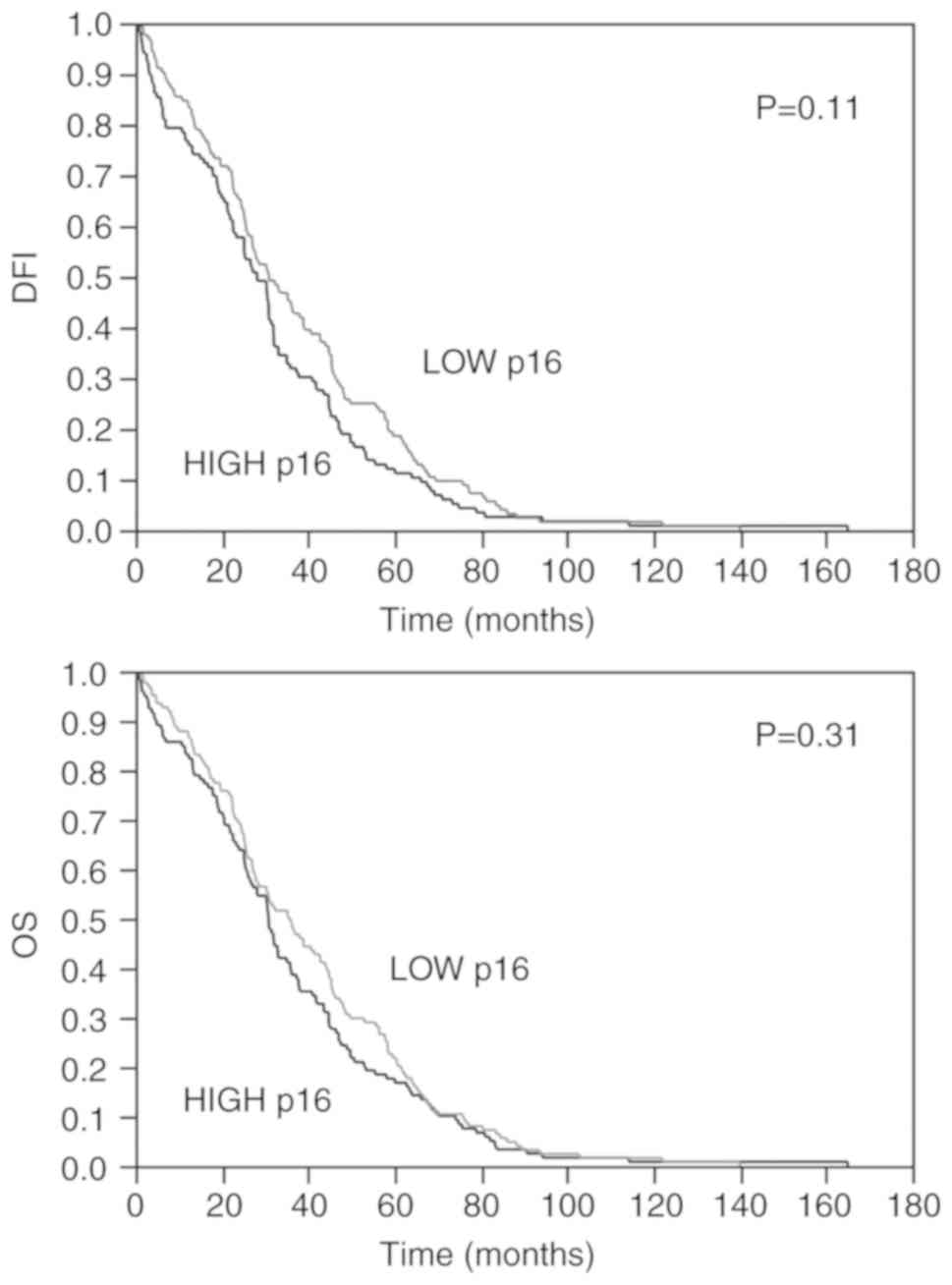|
1
|
Serrano M, Hannon GJ and Beach D: A new
regulatory motif in cell cycle control causing specific inhibition
of cyclinD-cdk4. Nature. 366:704–707. 1993.PubMed/NCBI View
Article : Google Scholar
|
|
2
|
Serrano M: The tumor suppressor protein
p16INK4a. Exp Cell Res. 237:7–13. 1997.PubMed/NCBI View Article : Google Scholar
|
|
3
|
Liggett WH and Sidransky D: Role of the
p16 tumor suppressor gene in cancer. J Clin Oncol. 16:1197–1206.
1998.PubMed/NCBI View Article : Google Scholar
|
|
4
|
Tamimi Y, Bringuier PP, Smit F, van
Bokhoven A, Debruyne FM and Schalken JA: p16 mutations/deletions
are not frequent events in prostate cancer. Brit J Cancer.
74:120–122. 1996.PubMed/NCBI View Article : Google Scholar
|
|
5
|
Taga S, Osaki T, Ohgami A, Imoto H,
Yoshimatsu T, Yoshino I, Yano K, Nakanishi R, Ichiyoshi Y and
Yasumoto K: Prognostic value of the immunohistochemical detection
of p16INK4 expression in non small cell lung carcinoma. Cancer.
80:389–395. 1997.PubMed/NCBI View Article : Google Scholar
|
|
6
|
García-Sanz R, González M, Vargas M,
Chillón MC, Balanzategui A, Barbón M, Flores MT and San Miguel JF:
Deletions and rearrangements of cyclin-dependent kinase 4 inhibitor
gene p16 are associated with poor prognosis in B cell non-Hodgkin's
lymphomas. Leukemia. 11:1915–1920. 1997.PubMed/NCBI View Article : Google Scholar
|
|
7
|
Hwang HC, Sheffield BS, Rodriguez S,
Thompson K, Tse CH, Gown AM and Churg A: Utility of BAP1
immunohistochemistry and p16 (CDKN2A) FISH in the diagnosis of
malignant mesothelioma in effusion cytology specimens. Am J Surg
Pathol. 40:120–126. 2016.PubMed/NCBI View Article : Google Scholar
|
|
8
|
Mahajan A: Practical issues in the
application of p16 immunohistochemistry in diagnostic pathology.
Hum Pathol. 51:64–74. 2016.PubMed/NCBI View Article : Google Scholar
|
|
9
|
Serra S and Chetty R: p16. J Clin Pathol.
71:853–858. 2018.PubMed/NCBI View Article : Google Scholar
|
|
10
|
Lee CT, Capodieci P, Osman I, Fazzari M,
Ferrara J, Scher HI and Cordon-Cardo C: Overexpression of the
cyclin-dependent kinase inhibitor p16 is associated with tumor
recurrence in human prostate cancer. Clin Cancer Res. 5:977–983.
1999.PubMed/NCBI
|
|
11
|
Burdelski C, Dieckmann T, Heumann A,
Hube-Magg C, Kluth M, Beyer B, Steuber T, Pompe R, Graefen M, Simon
R, et al: p16 upregulation is linked to poor prognosis in ERG
negative prostate cancer. Tumour Biol. 37:12655–12663.
2016.PubMed/NCBI View Article : Google Scholar
|
|
12
|
Li J, Poi MJ and Tsai MD: Regulatory
mechanisms of tumor suppressor P16(INK4A) and their relevance to
cancer. Biochemistry. 50:5566–5582. 2011.PubMed/NCBI View Article : Google Scholar
|
|
13
|
Ju HQ, Ying H, Tian T, Ling J, Fu J, Lu Y,
Wu M, Yang L, Achreja A, Chen G, et al: Mutant Kras- and
p16-regulated NOX4 activation overcomes metabolic checkpoints in
development of pancreatic ductal adenocarcinoma. Nat Commun.
8(14437)2017.PubMed/NCBI View Article : Google Scholar
|
|
14
|
Zhu H, Luo H and Zhu X, Hu X, Zheng L and
Zhu X: Pyruvate kinase M2 (PKM2) expression correlates with
prognosis in solid cancers: A meta-analysis. Oncotarget.
8:1628–1640. 2017.PubMed/NCBI View Article : Google Scholar
|
|
15
|
Goldberg MS and Sharp PA: Pyruvate kinase
M2-specific siRNA induces apoptosis and tumor regression. J Exp
Med. 209:217–224. 2012.PubMed/NCBI View Article : Google Scholar
|
|
16
|
Hsu MC, Hung WC, Yamaguchi H, Lim SO, Liao
HW, Tsai CH and Hung MC: Extracellular PKM2 induces cancer
proliferation by activating the EGFR signalling pathway. Am J
Cancer Res. 6:628–638. 2016.PubMed/NCBI View Article : Google Scholar
|
|
17
|
Singh H, Longo DL and Chabner BA:
Improving prospects for targeting RAS. J Clin Oncol. 33:3650–3659.
2015.PubMed/NCBI View Article : Google Scholar
|
|
18
|
Sun Q, Chen X, Ma J, Peng H, Wang F, Zha
X, Wang Y, Jing Y, Yang H, Chen R, et al: Mammalian target of
rapamycin up-regulation of pyruvate kinase isoenzyme type M2 is
critical for aerobic glycolysis and tumor growth. Proc Natl Acad
Sci USA. 108:4129–4134. 2011.PubMed/NCBI View Article : Google Scholar
|
|
19
|
Yang W, Xia Y, Ji H, Zheng Y, Liang J,
Huang W, Gao X, Aldape K and Lu Z: Nuclear PKM2 regulates
beta-catenin transactivation upon EGFR activation. Nature.
480:118–122. 2011.PubMed/NCBI View Article : Google Scholar
|
|
20
|
Wong N, Yan J, Ojo D, De Melo J, Cutz JC
and Tang D: Changes in PKM2 associate with prostate cancer
progression. Cancer Invest. 32:330–338. 2014.PubMed/NCBI View Article : Google Scholar
|
|
21
|
Iorio MV and Croce CM: MicroRNAs in
cancer: Small molecules with a huge impact. J Clin Oncol.
27:5848–5856. 2009.PubMed/NCBI View Article : Google Scholar
|
|
22
|
Straume O and Akslen L: Alterations and
prognostic significance of p16 and p53 protein expression in
subgroups of cutaneous melanoma. Int J Cancer. 74:535–539.
1997.PubMed/NCBI View Article : Google Scholar
|
|
23
|
Wu QQ, Zheng B, Weng GB, Yang HM, Ren Y,
Weng XJ, Zhang SW and Zhu WZ: Downregulated NOX4 underlies a novel
inhibitory role of microRNA-137 in prostate cancer. J Cell Biochem.
120:10215–10227. 2019.PubMed/NCBI View Article : Google Scholar
|
|
24
|
Yoshida GJ: Metabolic reprogramming: The
emerging concept and associated therapeutic strategies. J Exp Clin
Cancer Res. 34(111)2015.PubMed/NCBI View Article : Google Scholar
|
|
25
|
Dey P, Kundu A, Sachan R, Park JH, Ahn MY,
Yoon K, Lee J, Kim ND, Kim IS, Lee BM and Kim HS: PKM2 knockdown
induces autophagic cell death via AKT/mTOR pathway in human
prostate cancer cells. Cell Physiol Biochem. 52:1535–1552.
2019.PubMed/NCBI View Article : Google Scholar
|
|
26
|
Etheridge A, Lee I, Hood L, Galas D and
Wang K: Extracellular microRNA: A new source of biomarkers. Mutat
Res. 717:85–90. 2011.PubMed/NCBI View Article : Google Scholar
|
|
27
|
Volinia S and Croce CM: Prognostic
microRNA/mRNA signature from the integrated analysis of patients
with invasive breast cancer. Proc Natl Acad Sci USA. 110:7413–7417.
2013.PubMed/NCBI View Article : Google Scholar
|
|
28
|
Feber A, Xi L, Pennathur A, Gooding WE,
Bandia S, Wu M, Luketich JD, Godfrey TE and Litle VR: MicroRNA
prognostic signature for nodal metastases and survival in
esophageal adenocarcinoma. Ann Thorac Surg. 91:1523–1530.
2011.PubMed/NCBI View Article : Google Scholar
|
|
29
|
Beer DG, Kardia SL, Huang C, Giordano TJ,
Levin AM, Misek DE, Lin L, Chen G, Gharib TG, Thomas DG, et al:
Gene-expression profiles predict survival of patients with lung
adenocarcinoma. Nat Med. 8:816–824. 2002.PubMed/NCBI View
Article : Google Scholar
|
|
30
|
Shukla S, Evans JR, Malik R, Feng FY,
Dhanasekaran SM, Cao X, Chen G, Beer DG, Jiang H and Chinnaiyan AM:
Development of a RNA-Seq based prognostic signature in lung
adenocarcinoma. J Natl Cancer Inst. 109:2016.PubMed/NCBI View Article : Google Scholar
|















